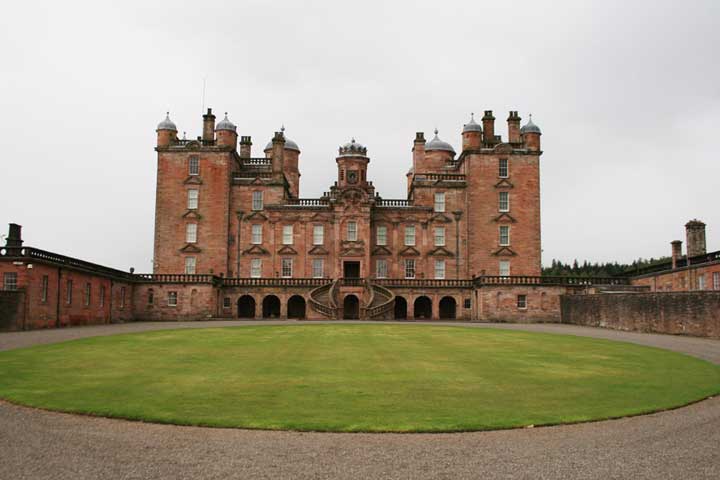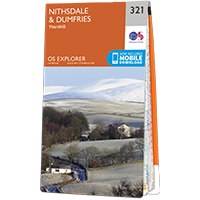

Drumlanrig Castle was built in the late 17th century as a palatial mansion however it incorporates parts of an older castle.
By 1356 the property was owned by the Thomas, the Earl of Mar. Tradition states that there were two castles on the site prior to the present building, so it’s likely that the first of them dates from the 14th century.
The earliest mention of a castle in documents is 1492, which may possibly be the second castle.
Thomas died without an heir in 1374 and the Barony of Drumlanrig passed to his sister Margaret, who was married to William Douglas, the 1st Earl of Douglas, and so the estate passed into the Douglas family. William Douglas’ grandson, also William Douglas, was made the 1st Baron Drumlanrig some time before his death in 1427. The title of Viscount Drumlanrig was created in 1628 for another William Douglas, the 9th Baron Drumlanrig, and 1st Earl of Queensberry.
The present Drumlanrig Castle was built by yet another William Douglas, the 3rd Earl of Queensberry, between 1679 and 1691 in the Renaissance style, using local pink sandstone. The architects are thought to have been James Smith and Robert Mylne.
Built on a square plan with an open courtyard at the centre. At each corner of the courtyard are round stair towers. On the outside of the house are massive square towers at each corner. The front of the building features a magnificent sweeping double staircase in stone.
In the basement of the south east tower is part of one of the earlier castles, with vaulted ceilings and part of an old kitchen. The remains of gun-loops can be seen on the east wall, and these are thought to date to the 16th century.
The south east and north east towers, and the wing connecting them, have noticeably thicker walls than the rest of the castle, and they are at a slightly irregular angle whereas the other three wings are perfectly perpendicular to one another.
This suggests that the eastern portion of the castle incorporates a significant part of an older castle within its fabric. There are also three iron yetts (grille doors) within the castle, each mounted in doorways with massively thick walls, again suggesting an older origin.
In 1597 Sir James Douglas of Drumlanrig and his allies signed a document promising not to attack the allies of Sir James Johnstone of Dunskellie.
In the 18th century the Drumlanrig estate suffered at the hands of yet another William Douglas, the 4th Duke of Queensberry. The 4th Duke cut down much of the estate’s woodland in order to fund his lavish London lifestyle (he was a member of the Hellfire Club), and in so doing incurred the wrath of Robert Burns amongst others. The castle was neglected and fell into disrepair.
Upon the death of the 4th Duke in 1810, with no legitimate heir, Drumlanrig Castle and the Dukedom of Queensberry passed to his second cousin once removed Henry Montagu Scott, the 3rd Duke of Buccleuch. The Duke of Buccleuch’s grandmother Lady Jane Douglas was the first cousin once removed of the 4th Duke of Queensberry. In recognition of his new title and estate, the Duke of Buccleuch added the Douglas name to his own, forming the now famous Montagu Douglas Scott surname.
In 1827 the 3rd Duke of Buccleuch’s grandson, William Montagu Douglas Scott, the 5th Duke of Buccleuch and 7th Duke of Queensberry, restored Drumlanrig Castle, and it has remained in the hands of the Dukes of Buccleuch ever since.
Alternative names for Drumlanrig Castle
Drumlangrig; Drumlanricke
Where is Drumlanrig Castle?
Drumlanrig Castle is in the parish of Durisdeer and the county of Dumfriesshire.
Grid reference: NX 85190 99214
Lat / long: 55.273557, -3.808694










